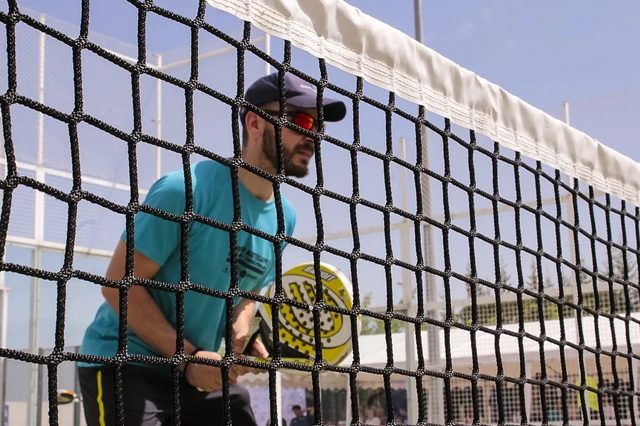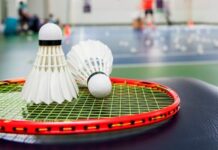If you are learning to enjoy this well -known racket sport and want to know how to play paddle tennis, you have come to the right place to learn about the different types of strokes and key aspects to master this sport.

Difference Between Wall Outlet and Wall Down
When talking about the wall descent, it must be taken into account that it is the most aggressive version of the wall exit. The latter must be mastered before daring to go down. To understand the differences, keep the following in mind:
- The wall exit is a basic hit, but key. In it, ball control should predominate and you should not risk failing. It is the basis for being able to properly perform a descent.
- The wall descent is an attack hit, with the purpose of accelerating the ball to win the point. It is riskier and there are more options to err, although with practice good results can be achieved.
Tactics in the descent of the wall
The descent of the wall is one of the options that you have to be able to attack the rival from the bottom of the court. Keep in mind that with this shot you take risks, and you should improve your technical execution as much as possible to reduce the chances of an error.
When to perform a wall descent
The most frequent situation in which a wall descent can be executed is those cases in which the rival has made us a lob. The ball must come out of the wall and take off quite a bit from it, in addition to having enough height to be able to hit it well above. From this situation it will be possible to attack the ball.
The wall descent is an excellent opportunity to attack or counterattack from the defense zone of the track. However, do not make the mistake of exceeding power, since on many occasions it is more beneficial to be able to maintain control.
The main purpose of the wall descent is:
- Try to make opponents uncomfortable in the attacking zone and make their volley more difficult. In this way, his return could leave us with a favorable situation within the game.
- It also serves to overwhelm opponents and push them back, an opportunity that can be used to launch a counterattack. Throwing it down the center is a good option on many occasions.
Where to direct the wall descent
When it comes to knowing how to go down the wall in paddle tennis, you have to take into account a series of basic options to try to direct the ball:
- Play hole. For this, it will be key to have good communication with your partner, since he will be the one who gives us the instructions on the placement of our rivals.
- Play the body. Being a speed blow, if it is thrown in the direction of the opponent’s body, its return can be very uncomfortable. This could not happen or cause the return to be in a favorable position for the next play.
- Direct the wall descent to the center. It is the safest alternative; and for this reason, it is the option to which you should resort whenever you doubt where to throw the ball.
How to execute the wall descent?
When it comes to knowing how to do the wall descent in paddle tennis, it is necessary to know the indications to be able to execute it in the proper way. First of all, you should keep in mind that you will most likely have to go from the net to the bottom of the court.
Before the technical execution of this shot you should run from the net to the bottom fast enough to give yourself enough time to position yourself correctly. It is very important that before striking, the steps we take are lateral.
Tips to make a good wall descent
Some tips to get a good descent from the wall, the steps to follow are the following:
- We will stand on our side and with our legs apart in order to get good support.
- It is necessary that the point of impact of the ball is in front of us.
- The weight of the body must be passed or transferred from the back leg, the one closest to the wall, to the front leg, passing the weight from one to the other.
- You have to place the shovel back and up.
- The movement of the racket will be fast and must be done mainly with the shoulder joint. No flick of the wrist should be done or you will lose too much control over the ball.

















